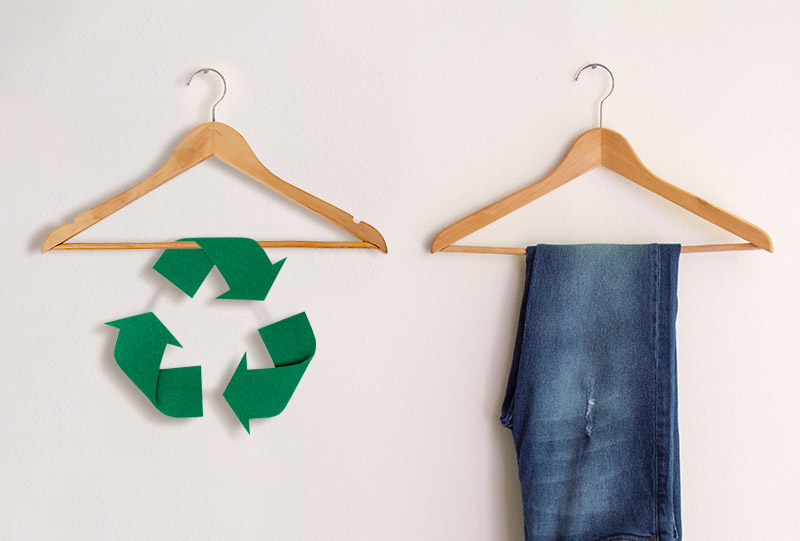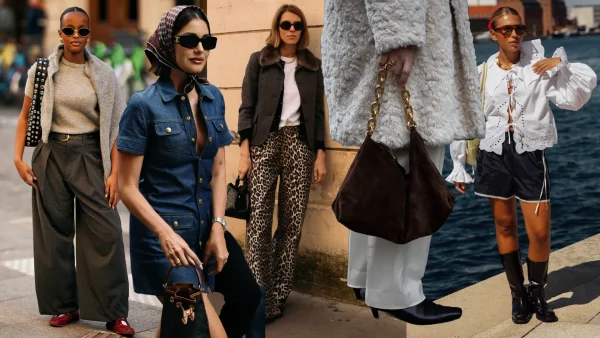The Rise of Sustainable Fashion
Many consumers are becoming more aware about the different options they have when it comes to shopping. Sustainable fashion is one option that many are exploring in order to make a positive impact on the environment, and the lives of garment workers. Sustainable fashion is clothing that is manufactured, distributed, and used in an environmentally friendly way. Ethical fashion, a related term, refers to clothing that is produced in a way that respects welfare and the rights of workers. To achieve sustainability, clothing can be upcycled from old clothing pieces, or produced using organic materials, biodegradable dyes, and cut in ways that limit the amount of excess fabric.
The problem that environmentally conscious shoppers have is that the vast majority of clothes are produced in an unsustainable manner, meaning, not all clothing is manufactured using methods that our planet can support for a long period of time. Thus, purchasing sustainable clothing is extremely difficult, and sometimes, extremely costly. To add onto that, the whole fashion industry has revolutionized itself to adopt a “fast fashion” business model in order to accommodate increasing customer demand. Fast fashion is when companies are frequently producing new designs in accordance with what is “trending”. This mass production of clothing has altered people’s views of clothing itself. We have abandoned the idea that a single shirt can be worn for decades, and have established clothing as disposable goods that we replace constantly. It goes without saying that this new structure of the fashion industry is destructive to the environment. It also creates a very competitive market which gives businesses the incentive to make alterations to their production costs in order to keep prices lower than their competitors. Unfortunately, many times this results in detestable work environments.
US consumers might be shocked to realize that only three percent of our clothing is made here in the US, while the other 97% is outsourced to other countries. Many businesses have factories in Bangladesh where according to industryweek.com, most factory workers make as little as 10 dollars a week, so as to limit production costs. As a result of this, the garment workers are forced to choose between complying with the industry’s demands that they work at such low wages, or to not have a job at all. As you may have guessed, many have no other choice than to choose the former. On top of that, their work conditions are extremely unsafe which explains why each year there is an estimated 1.4 million injuries of fashion workers. Third world countries, like Bangladesh, also have very limited environmental safety restrictions, making the fashion industry the second largest contributor to pollution.
Oftentimes wastewater from clothing production is dumped directly into rivers. The contaminants from the wastewater are extremely harmful to any humans living along the river banks, as well as the aquatic life. Furthermore, once the wastewater makes its way down stream, it then contaminates lakes and oceans causing potential health risks around the world. Clothing also contributes a great amount to waste accumulation. Did you know it can take up to 200 years for an article of clothing made out of synthetic fibers to decompose? This may be hard to believe considering synthetic fibers are used in 72% of the world’s clothing (sustainyourstyle.org). Not to mention, the industry uses an immense amount of fossil fuels for production. Polyester production alone uses approximately 70 million barrels of oil in a given year. On top of all of this, the industry also causes deaths in farmers due to the overuse of chemicals, the introduction of plastic into our food chain via the consumption of microfibers, and it employs over usage of water which leads to desertification. This may leave some wondering, is it really worth all of this?
Many choose to shop sustainably in an effort to minimize the destruction that the new fashion industry causes. One major sustainable fashion brand is People Tree; they make sophisticated chic clothing for women, their stated principles are fair trade, covering fair wages, good working conditions, transparency, environmental best practice and gender equality. Another up and coming sustainable fashion brand is Chnge, they mostly make graphic clothing that is marketed towards a younger audience in order to expose the younger generations to sustainable shopping. H&M, one of fast fashion’s biggest businesses, is also making efforts to reduce their carbon footprint by incorporating some aspects of sustainable fashion into their new collection, “H&M conscious.” Other big player brands such as Levi’s, Patagonia, Columbia, and Ralph Lauren are working towards achieving a more sustainable production process. With bigger brands such as these, even small adjustments to their production process can go a very long way.
There are a lot of steps to shopping ethically. Firstly, it’s important to know where to shop. For those who are balling on a budget, sustainable clothing may seem too costly, and to an extent that is true. When you shop sustainably, you are paying for quality, and that can be expensive. However, there are cheaper options out there as well. Fashion brand, Ten Tree, sells affordable and sustainable clothing, and pledges to plant ten new trees for every purchase you make. Another brand, Happy tree, does similar work however they give shoppers the opportunity to have fifteen trees planted, have 1 pound of garbage picked up, or to prevent 150 pounds of greenhouse gas emissions. Another stylish and affordable sustainable brand is Alternative Apparel. All of these brands work with their customers to ensure they are getting the best quality clothing or their money, while still maintaining their promise to protect the planet.
Aside from shopping at sustainable clothing brands such as these, any simple adjustments to one’s shopping habits can have huge effects on our planet. Secondhand shopping, upcycling, looking for clothes that are made out of organic materials, and most importantly looking into whether your favorite brands are sustainable are also great ways to start.

Hello everybody:) my name is Raynah Jacobs. I have had the pleasure of being on the Berkley Writing for Publication staff for Four years now....








Jackson Lovchuk • Nov 10, 2020 at 11:17 pm
Hi Mr. Giarmo